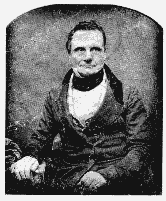|
Babbage never
actually built his machine, but his ideas were used when modern
computers were developed.
In 1880, the
United States government held a census. When it took seven years
to finalise the results, the Census Bureau decided to have a competition
to see if anyone could invent a better, faster method. The winner
was a man named Herman Hollerith, who invented the punched card.
He formed the company that would eventually become the giant International
Business Machines (IBM).
This system
was improved by James Powers, in 1910. Although he worked for
the Census Bureau, he formed his own company, which became part
of Remington Rand, added the Sperry and Univac companies, and
eventually became Unisys. The punched card system was used for
inputting data into early programmable computers. These arrived
during World War II. At that time, only the military could afford
the huge cost.
Several machines
were built at the same time, including the Mark I at Harvard University
and the ENIAC and EDVAC at the University of Pennsylvania. The
first machine to be ëmass-producedí and sold was the UNIVAC
in 1951, designed by Dr J Presper Eckert and Dr John Maunchly.
IBM started selling systems just two years later.
|

